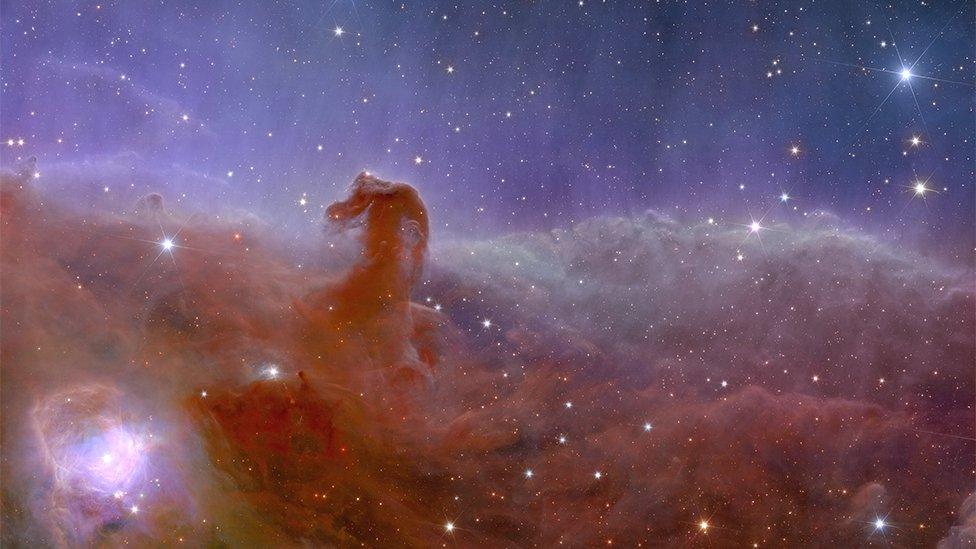ESA Euclid telescope provides images of dark universe
- Published
- comments

The Horsehead Nebula is a great cloud of gas and dust where stars are being born
The European Space Agency (ESA) has released the first colour images of the universe captured by its Euclid telescope.
The telescope was launched in July, and scientists say the pictures are the sharpest of their kind.
It's hoped the instrument will help astronomers understand what they call the dark universe.
The Euclid telescope will spend six years in space, creating a 3D map of galaxies formed around 10 billion years ago.
What has the Euclid telescope pictured?
Spiral Galaxy IC 342 - also know as the "Hidden Galaxy" - is difficult to see because it's located on the far side of the Milky Way
The European Space Agency is leading the six-year Euclid mission with US space agency Nasa to investigate how dark matter and dark energy have made our universe look like it does today.
Scientists say that 95% of our universe is made up this way but they don't know very much about them.
To reveal the secrets of their influence on the visible universe, Euclid will observe the shapes, distances and motions of billions of galaxies up to 10 billion light years away.
By doing this, it will be able to create the largest cosmic 3D map ever made.
The Perseus Cluster is one of the most massive structures in the universe - this image contains 1,000 galaxies from this group
To showcase their new mission, the ESA has released its first full-colour images that include the Horsehead Nebula and a galaxy located on the other side of our Milky Way galaxy.
Experts say what makes Euclid's view of the universe special is its ability to create detailed infrared images across a huge part of the sky in just one sitting - even when the telescope is zooming in on distant galaxies.
What is dark matter and dark energy?
WATCH: Euclid launch - Mission to find out what universe is made of gets underway
Dark matter itself can't be detected, but scientists know it's there because it affects other things we can see in the universe.
For example, dark matter is the stuff that helps give galaxies their shape - like scaffolding holding up the shape of a galaxy.
The Euclid telescope will investigate this dark matter by looking at how it affects light coming through from distant galaxies.
Dark energy on the other hand appears to affect how fast the universe is expanding.
The aim is for the Euclid telescope to map out how galaxies are spread out in the universe, and how, as time goes by, this is changing.
